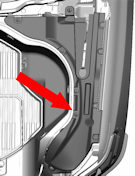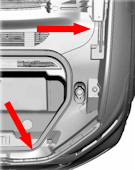Speed limiting The Smart division of Mercedes-Benz created two sets of Speed Limiting indicators, and did it in but two model years! It leaves us with 28 entries covering speed limiting on the page. The first set inverts the more common use of the LIM acronym, moving it to the top like the one to …
Category: Articles & Commentaries
Discussions on topics of interest to drivers concerning things they may not understand about their vehicles as well as articles on the future of the auto industry.
Permanent link to this article: https://dashboardsymbols.com/2025/07/smart-symbols-page-is-at-last-complete/
Permanent link to this article: https://dashboardsymbols.com/2025/07/smart-aggravates-our-speed-limiting-page/
Lightning and Transit EV jump starting far simpler than the Mach E
EV jump starting As we assemble our next EV jump starting video, this one for Ford, we’ve found that procedures for Transit and Lightning EVs are far easier and more straight forward than the Mustang Mach E, as we noted in another post. And it “starts” with the fact that the two trucks use a …
Permanent link to this article: https://dashboardsymbols.com/2025/07/lightning-and-transit-ev-jump-starting-far-simpler-than-the-mach-e/
Misinformation on EV battery fires uncontained
EV battery fires I cringe every time I hear a late night television host make a joke about EV battery fires. They are pretty much always overhyped, as if it happens all the time, or simply a lie, like they explode! They don’t. Electric vehicle (EV) batteries — the high voltage version — are built …
Permanent link to this article: https://dashboardsymbols.com/2025/07/misinformation-on-ev-battery-fires-uncontained/
Ford Mustang Mach-E presents a jump start problem
Mustang Mach-E As we ready our next video on jump starting electric vehicles (EVs) with dead 12-volt start batteries, we find that getting inside a Ford Mustang Mach-E in this state is a challenge, to say the least. Ford does not supply a vehicle key or a key cylinder to use it in. In a …
Permanent link to this article: https://dashboardsymbols.com/2025/07/ford-mustang-mach-e-presents-a-jump-start-problem/
Smart gets dumb on adaptive cruise control
Adaptive cruise The Smart division of Mercedes-Benz has created a very different set of images to represent Adaptive Cruise Control, starting with the 2024 Smart 5 model. Gone are the speedometer dials, images of cars and representations of distances between cars. Smart is now using a semi circle with a number in it and the …
Permanent link to this article: https://dashboardsymbols.com/2025/07/smart-gets-dumb-on-adaptive-cruise-control/
Acura adds the ADX model to its lineup, prompts page checks
ADX model We spotted an Acura ADX model on the road a few days ago, and it was one we were not aware of. So, a little digging and we find that it is new for 2025. So, this prompts a check of symbols and key fobs. First, it uses the driver’s door handle currently …
Permanent link to this article: https://dashboardsymbols.com/2025/07/acura-adds-the-adx-model-to-its-lineup/




Smart symbols page is at last complete
Smart symbols page Its taken several weeks, but with the addition of a new child safety lock on indicator (left) our Mercedes-Benz division Smart symbols page is at last complete. The safety lock symbol is one of at least a dozen new symbol we had to create for the page. We also generated 11 new …
Continue reading